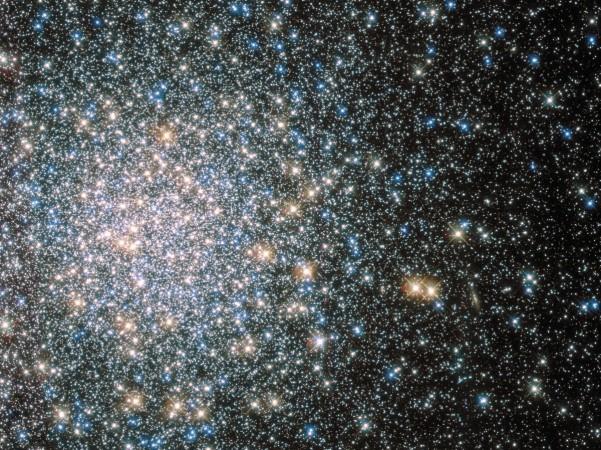
In a two-day conference "Preparing For Discovery", NASA and the Library of Congress brought together historians, philosophers and theologians from around the world in an attempt to close the gap between life on Earth and the possibility of life outside it.
The agenda behind the symposium was to "explore how we prepare for the inevitable discovery of extraterrestrial life, be it simple microbial organisms or intelligent beings."
On 18 and 19 September, reputed speakers from various fields, including Dr Steven J. Dick, astronomer, symposium organiser and former chief NASA historian, Constance M. Bertka – consultant at Science and Society Resources, Eric J. Chaisson - Astrophysicist, Harvard University, Clément Vidal – Philosopher and co-director of the 'Evo Devo Universe', Jennifer Wiseman - Senior Scientist for Hubble Space Telescope, NASA Goddard and many others, spoke on how recent years it has come to light that living organisms thrive in harsher environments on Earth than was previously imagined.
"Beyond Earth, science has identified more than 1,400 exoplanets. That life thrives in multifarious conditions, coupled with these potentially habitable exoplanets and the detection of life-giving elements on numerous moons on asteroids, means we must face the possibility that simple or complex organisms may be discovered beyond Earth," read the abstract of the "Prepare for Discovery" published by NASA/Library of Congress Astrobiology Symposium.
"We're looking at all scenarios about finding life. If you find microbes, that's one thing. If you find intelligence, it's another. And if they communicate, it's something else, and depending on what they say, it's something else!" said Dick. "The idea is not to wait until we make a discovery, but to try and prepare the public for what the implications might be when such a discovery is made," he told The Huffington Post.

According to the Seth Shostak, a senior astronomer at the SETI Institute in Mountain View, California, there are about 10,000 billion visible stars that are part of the universe.
"We know that most of those stars have planets - 70 or 80 percent. If all of those planets are sterile, and you're the only interesting thing happening in the cosmos, then you are a miracle. That would be exceptional in the extreme. So, the middle-of-the-road approach is to say, 'You're not a miracle, you're just another duck in a row of ducks," Shostak states.
"The bottom line of this is something like one in five of all stars may have an analog to Earth. That's a lot of habitable worlds, and, indeed, the number of Earths in our own galaxy might be on the order of 50 billion."
In a recap of the sympossium titled "On Microbes and Planets: Our Second Astrobiology Symposium Recapped", Dan Turello, Program Specialist at Kluge Center discusses how symposium participants touched on a wide range of issues, including the nature and diverse manifestations of intelligence across the spectrum of life, and the degree to which biological laws can or cannot be universalised.
Turello speaks of one participant who detailed the vast variety of potentially habitable environments on Earth and other planets, discussing life-sustaining ranges in temperature, radiation, and pressure, while other panelists discussed representations of ET in science fiction and highlighted the cultural and linguistic norms that influence how we think.
Risk management and the protocols necessary to ensure the safe-handling of materials retrieved from other planets were also discussed, he added.
Theologian Robin Lovin and Brother Guy Consolmagno of the Vatican in conversation #PrepareToDiscover pic.twitter.com/EYpWNwOGig
— John W. Kluge Center (@KlugeCtr) September 19, 2014
The conference also included a great deal of discussion about the upcoming mission of the Hubble's long-anticipated successor: the James Webb Space Telescope. As large as a tennis court, this deep space observatory is scheduled for a 2018 launch and will orbit beyond our moon and focus on new planetary discoveries and collect data from the atmospheres of those planets, looking for certain things that might point to what we would consider possible indicators of life.
Watch below the video of astrobiologists and theologists discussing the discoveries of new, potentially habitable worlds beyond our Solar System and what it means for humanity, at The John W. Kluge Center in Thomas Jefferson Building.

















